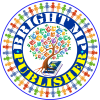It seems like there might be a small confusion in your question, but I’ll provide guidance on how to write a professional book for readers:
Understand Your Audience:
- Identify your target readers. Consider factors such as age, interests, education level, and any specific needs or challenges they might have.
Define the Purpose of Your Book:
- Clearly define the purpose of your book. What do you want your readers to gain or experience? What problem does your book solve for them?
Create a Solid Outline:
- Develop a detailed outline that organizes your content logically. This will help you maintain a clear and structured flow throughout the book.
Engaging Introduction:
- Craft an introduction that captures the reader’s attention. Clearly convey what your book is about and why it’s valuable to them.
Develop a Compelling Writing Style:
- Adapt your writing style to resonate with your target readers. Consider their preferences, language nuances, and the level of complexity they’re comfortable with.
Address Reader Needs:
- Keep the reader’s needs and interests in mind. Provide information, solutions, or entertainment that aligns with what your target audience is looking for.
Be Clear and Concise:
- Strive for clarity and simplicity in your writing. Avoid unnecessary jargon or complexity unless it’s appropriate for your specific audience.
Build Credibility:
- Back up your information with credible sources and research. This helps build trust with your readers.
Maintain Consistency:
- Keep a consistent tone throughout the book. Consistency creates a smoother reading experience and helps readers connect with your message.
Craft a Strong Conclusion:
- Conclude your book effectively, summarizing key points and leaving a lasting impression on the reader.
Editing and Proofreading:
- Edit your manuscript thoroughly for grammar, spelling, and punctuation errors. Consider hiring a professional editor to ensure a polished final product.
Reader-Friendly Formatting:
- Ensure your book is well-formatted for readability. Pay attention to font choices, spacing, and chapter divisions.
Beta Readers:
- Seek feedback from beta readers who represent your target audience. Use their insights to refine your book before publication.
Publishing and Marketing:
- Choose a publishing route based on your goals (traditional publishing or self-publishing).
- Develop a marketing strategy to reach and engage your target readers. Utilize online and offline channels to promote your book.
Remember that connecting with your readers is key. Understanding their needs, preferences, and expectations will guide your writing process, making your book more impactful and enjoyable for your intended audience.

